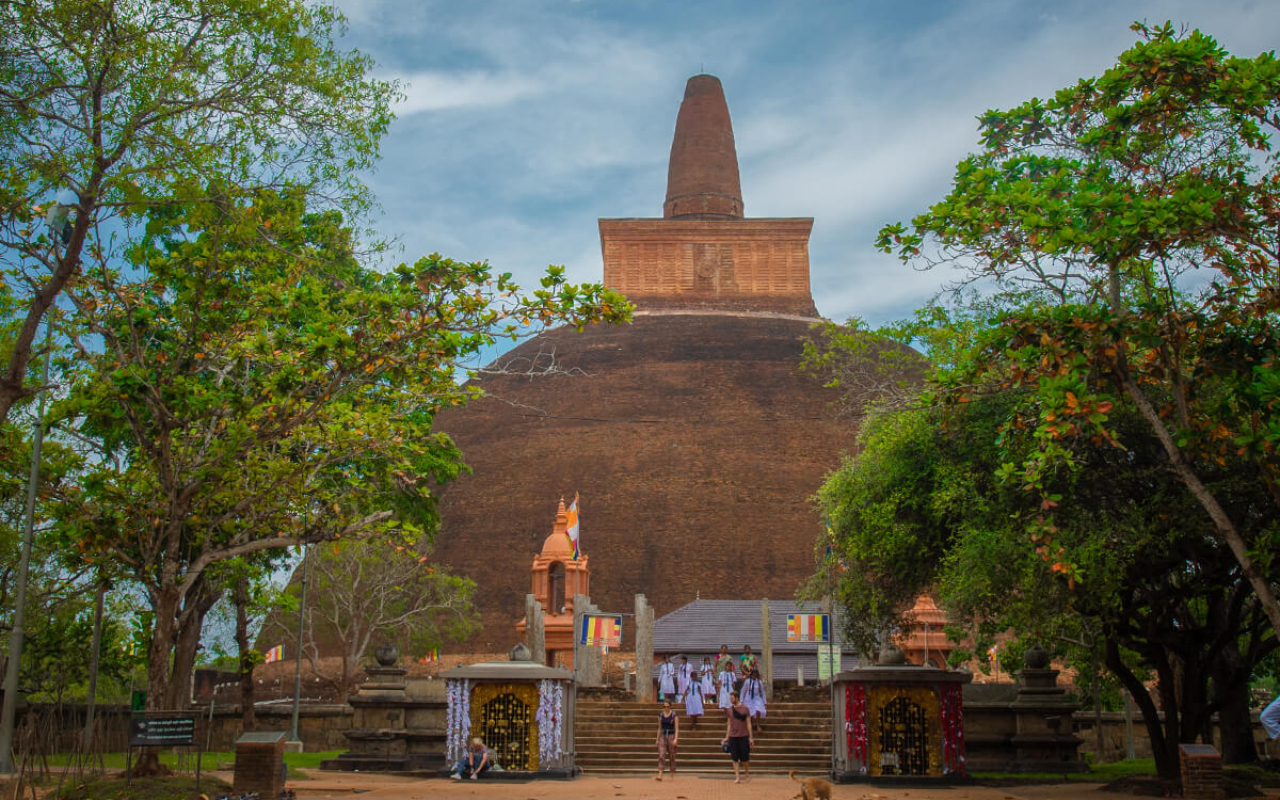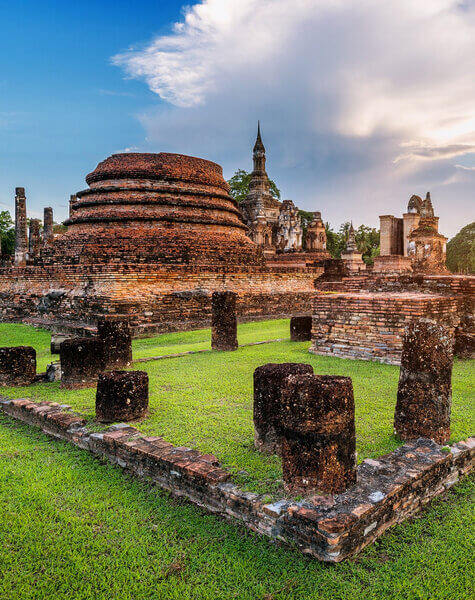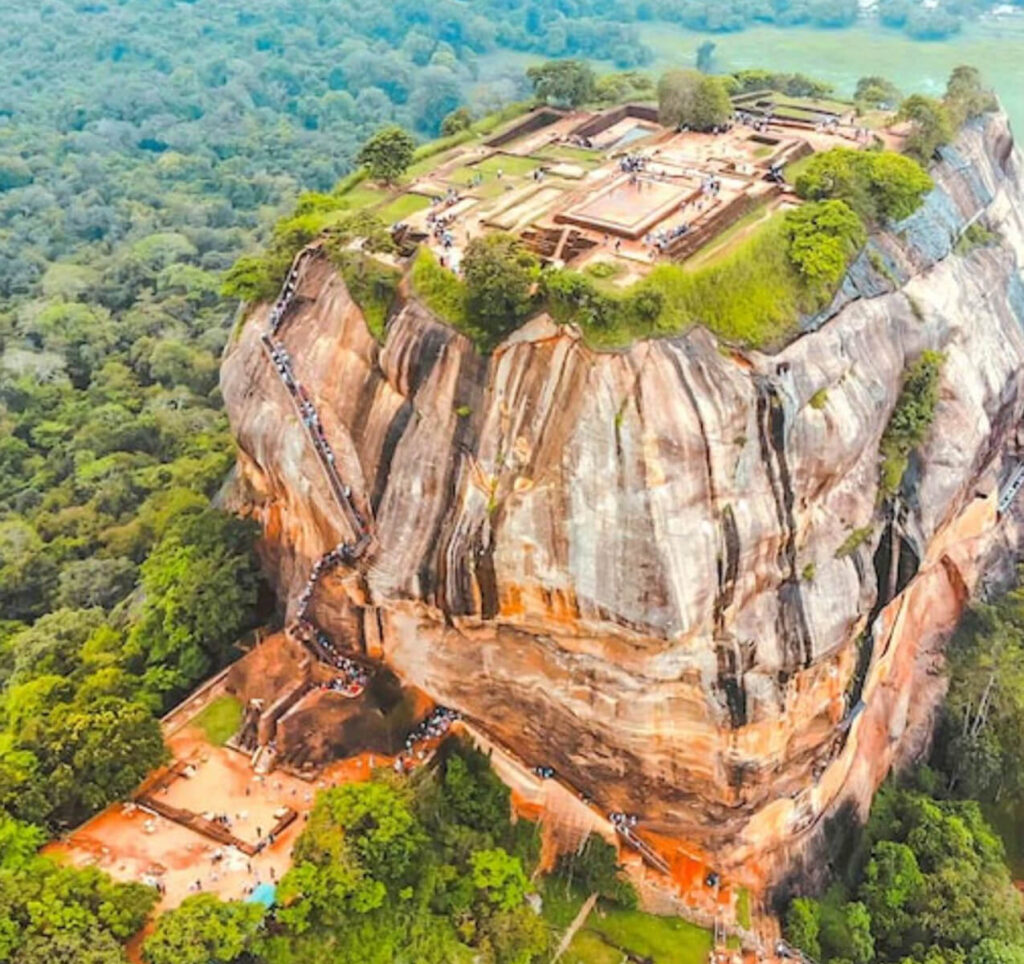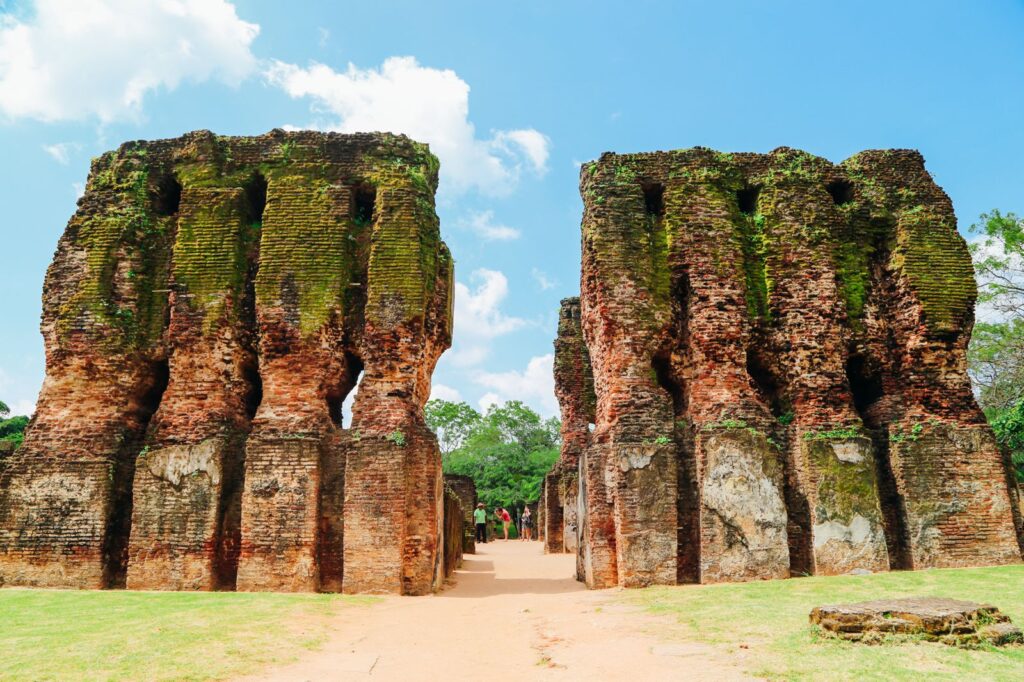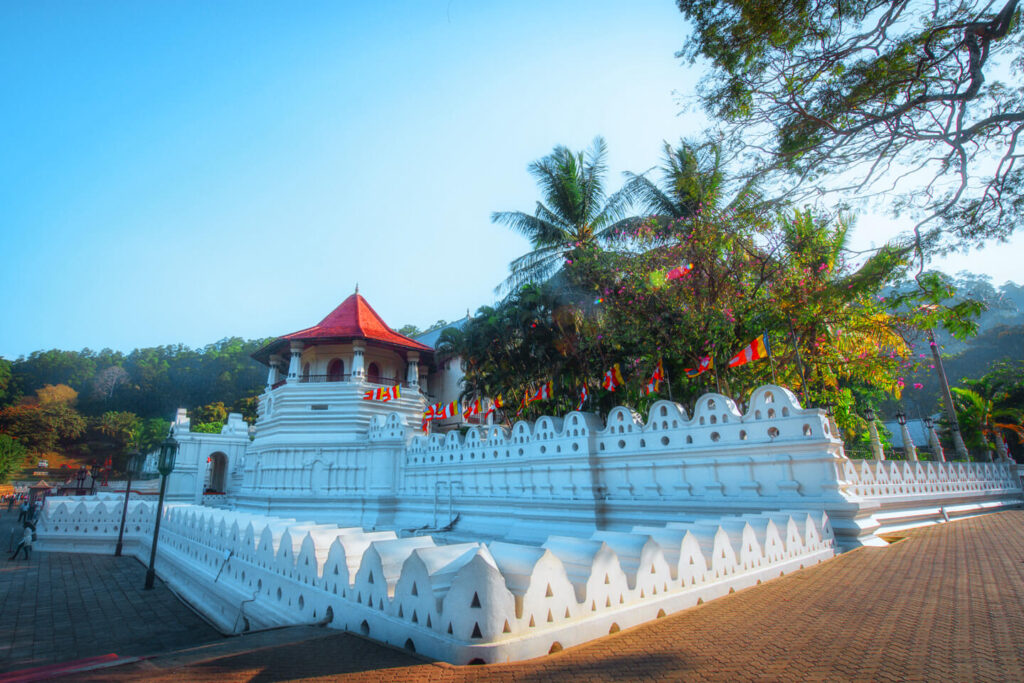The rise and fall of the ancient kingdoms of Sri Lanka shaped its legacy. Each kingdom tells a remarkable story of its people, faith, imagination and kingship. From the dagobas of Anuradhapura to the monolithic carvings of Polonnaruwa and the mystical rock fortress of Sigiriya, uncovering the island’s history is a cultural splendour. Let us take you through the fascinating heritage that enthrals the world.
The Ancient Kingdom of Anuradhapura (437 BC to 1017 AD)
It was the island’s first capital and longest-serving. Considered the heartland of Sinhala Buddhist civilisation, it contains a wealth of ancient monuments, heritage sites and lush rice fields. Anuradhapura also appears on Ptolemy’s world map. It is a UNESCO city.
Its impressive dagobas (stupas) and the sophisticated irrigation system demonstrate a golden era of ancient Sri Lanka. The arrival of Buddhism in the 3rd Century BC had a lasting impression on the kingdom, shaping its identity.
Jetavanaramaya, Ruwanweliseya and Abhayagiri are three of the tallest ancient structures in the world. Their evocative sights are visible across the city’s skyline, rising above the plains. Abhayagiri was a monastic institution that garnered international students and scholars of all Buddhist traditions by the 1st century.
Sri Maha Bodhi is one of the most sacred sites in Anuradhapura. It is a cutting from the original fig tree that is said to have sheltered Buddha during his enlightenment in India. It arrived in Sri Lanka with emperor Asoka’s daughter Samgamitta in the 3rd century BC.
A day spent here gives you countless awe-inspiring moments to remember forever. Among the attractions are Mirisavetiya, Isurumuniya, the Royal Park, Thuparamaya, Lovamahapaya, Rathna Prasada and the archaeological museum. The many reservoirs in the area, such as Tissa Wewa and Abhaya Wewa, offer aesthetic views of larger dagobas, framing them in their backdrop on the banks.
Sigiriya (473 – 495)
During the reign of Kashyapa I, the capital shifted to Sigiriya. The king ruled from his fortress at the summit of the rock. He was anticipating a battle with his half-brother, the rightful heir to the throne. Sigiriya is one of the most visited places in Sri Lanka. Its marvellous engineering and ingenious water gardens have earned it UNESCO status. The palace ruins, pools and the views at the top draw thousands to this ancient citadel every year.
The Ancient Kingdom of Polonnaruwa (1055 AD – 1212 AD)
After the Chola conquest of Anuradhapura, the seat of power shifted to Polonnaruwa in the 11th century. Parakramabahu the Great expanded the city, building Buddhist monuments, colossal reservoirs and sprawling complexes. Parakrama Samudraya is one of his most notable constructions, designed to collect ‘every bit of rain’. Polonnaruwa is a UNESCO city.
The Quadrangle (Dalada Maluva) of Polonnaruwa contains some of the most sacred monuments in the city, including the exquisite Vatadage. Rankoth Vehera is the fourth-largest stupa in the country and the largest in Polonnaruwa. Gal Vihare (Uttararama) showcases the pinnacle of Sinhala rock carving. Four sculptures of Buddha carved out of a single granite rock feature elaborate details and beautiful natural variegation of the stone.
Nissanka Latha Mandapa, built by King Nissanka Malla, is a unique stone structure. Sathmahal Prasada (Seven Story Tower) resembles Buddhist Cambodian architecture. The remains of the Royal Palace are still visible and impressive. The South Indian invasion left several Hindu temple remains. These are rare examples of Pandyan architecture on the island.
Dambadeniya (1232 AD – 1271 AD)
After the fall of Polonnaruwa, Vijayabahu III moved the capital to Dambadeniya in the 13th century. Dambadeniya Rock or Maliga Gala, accessible by the original stone stairway, is what remains of the fortress. The view from the summit is worth the hike. The old temple in the city still has stone features from the Dambadeniya period. Restored in the Kandyan period, it contains murals, wood carvings and statues of the Kandyan style.
Yapahuwa (1272 AD -1284 AD)
Buwanekabahu I shifted the island’s capital to Yapahuwa for security reasons. He fortified it with a palace-fortress built on a 300ft high rock boulder. The steep ornamental stone stairway to the top is its finest feature. There are several caves at the base of the rock and one at the top. The temple at the top used to house the Sacred Tooth Relic, the most sacred regalia of the sovereign in ancient Lanka. You can still see the temple stupa. At the summit is a spectacular 360-degree view. It is the less-visited rock fortress, although incredibly photogenic. Like Sigiriya, the rock was a monastic complex before and after the kingdom prevailed.
The seat of power then moved to Gampola, Kotte, Sitawaka and finally, Kandy.
Kandy (1597 – 1815)
Kandy is the most significant, where the Buddha’s Tooth Relic found its permanent home. It was also the last Sinhala Kingdom before the island fell to the British. The Temple of the Tooth is the city’s most important site. It is the finest example of Kandyan architecture. It is a site where religious rituals and ceremonies take place every day. Kandy Perahera, or Esela Perahera, a part of the Festival of the Tooth, is a cultural phenomenon occurring annually from July to August.
Kandy is a UNESCO city and the gateway to the Central Hills. The rising elevation makes the climate cooler and cooler as you go deep into the hills. This tea-growing region flourishes with farms, spice gardens and dairies.
Unravelling a past steeped in glory and mystery with Blue Lanka Tours
Venture into the heart of the heritage and legacy of this island nation. Trace the cultural fabric that weaves an eventful and dramatic history. See the places hidden in the jungles and lost in time. Learn the stories of every monument that stands proud and evocative.
Blue Lanka Tours takes you on a history journey. Immerse yourself in culture with deeper insights. Travel to notable places and the least known and experience unique adventures. Our travels are always responsible and promote cultural heritage with due respect. Uncover the extent of one of the most intriguing past civilisations with our tailor-made tours.

